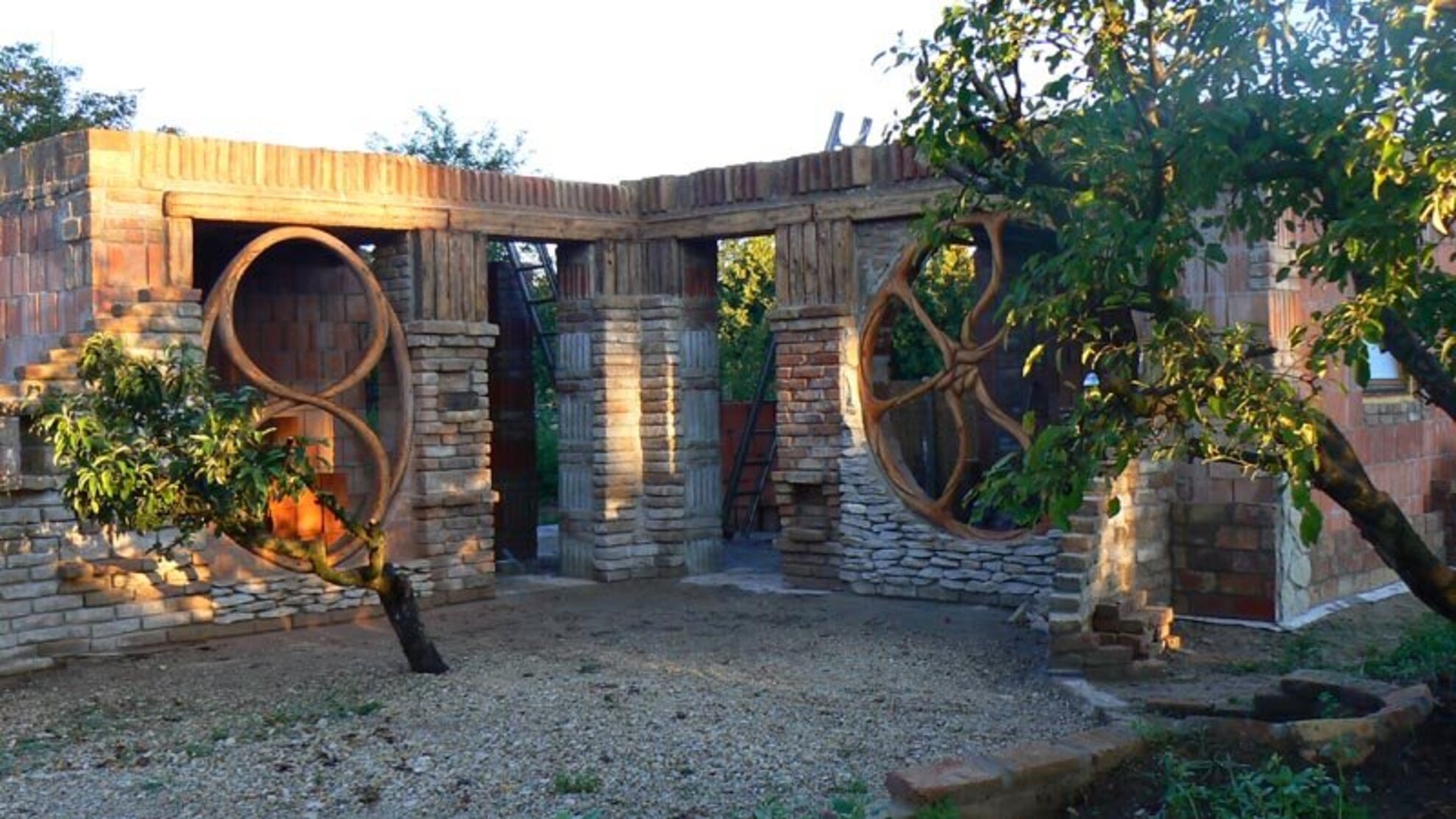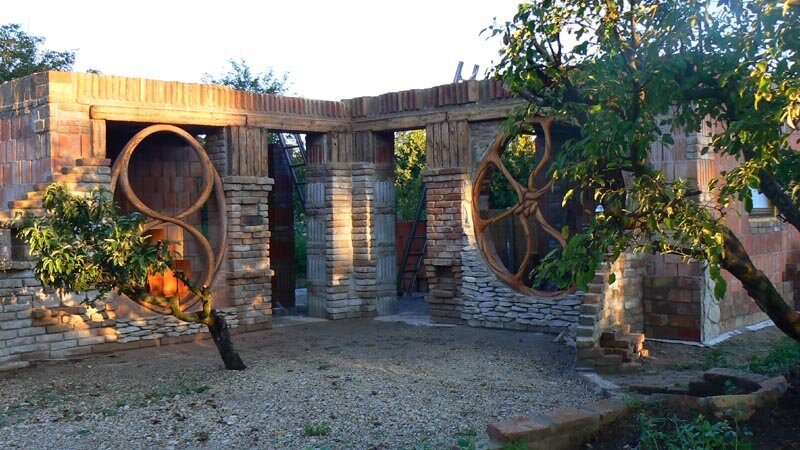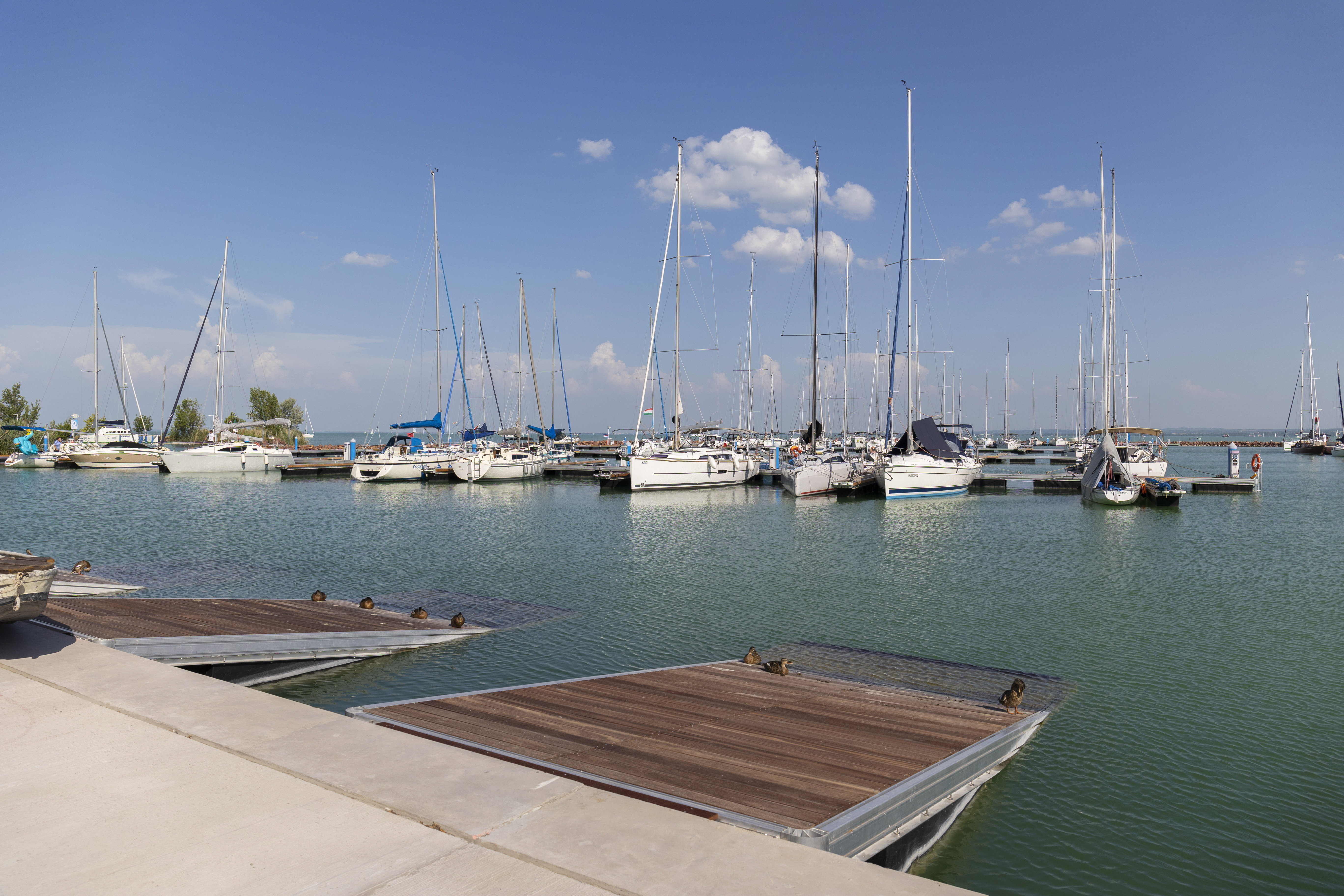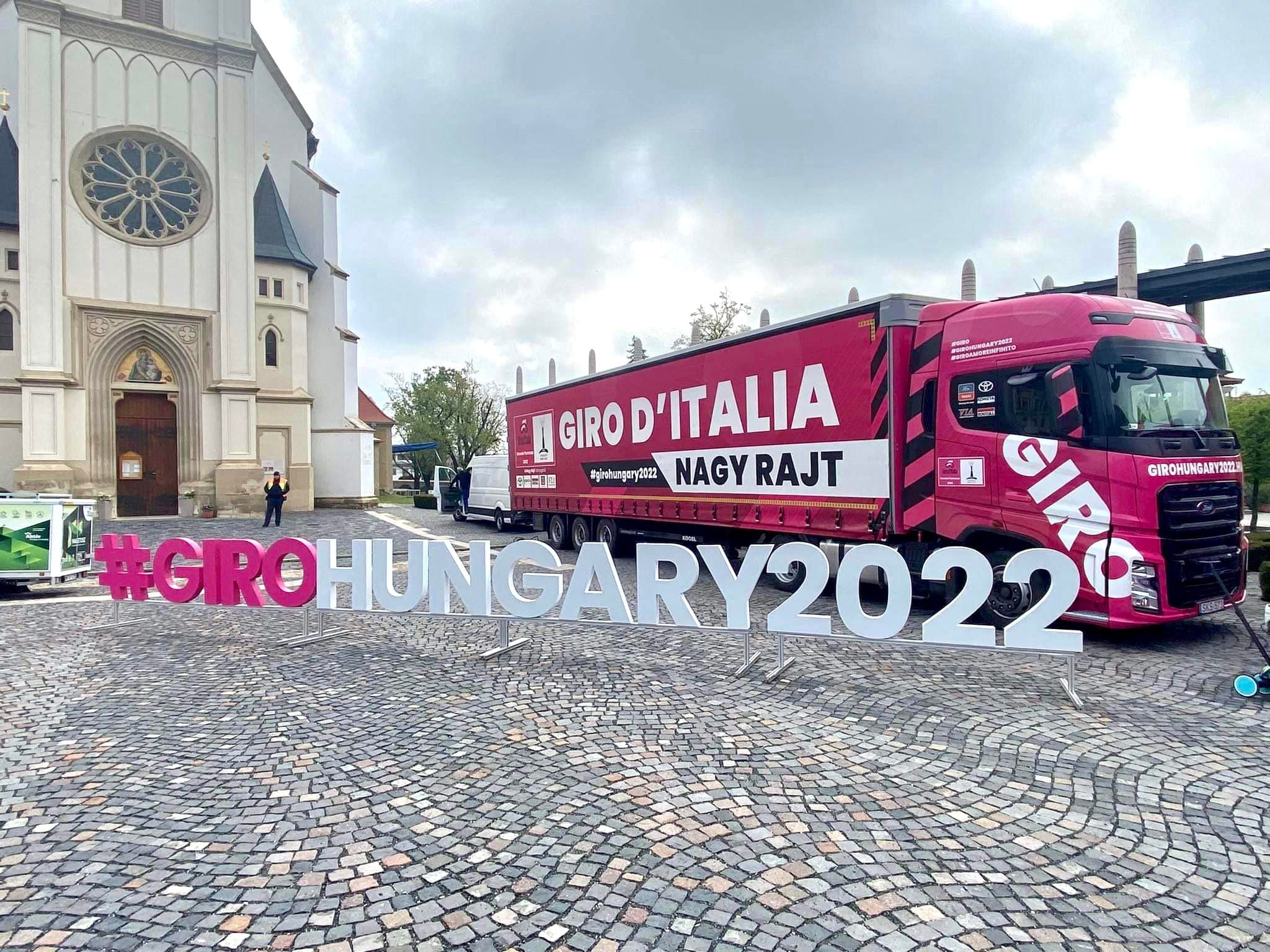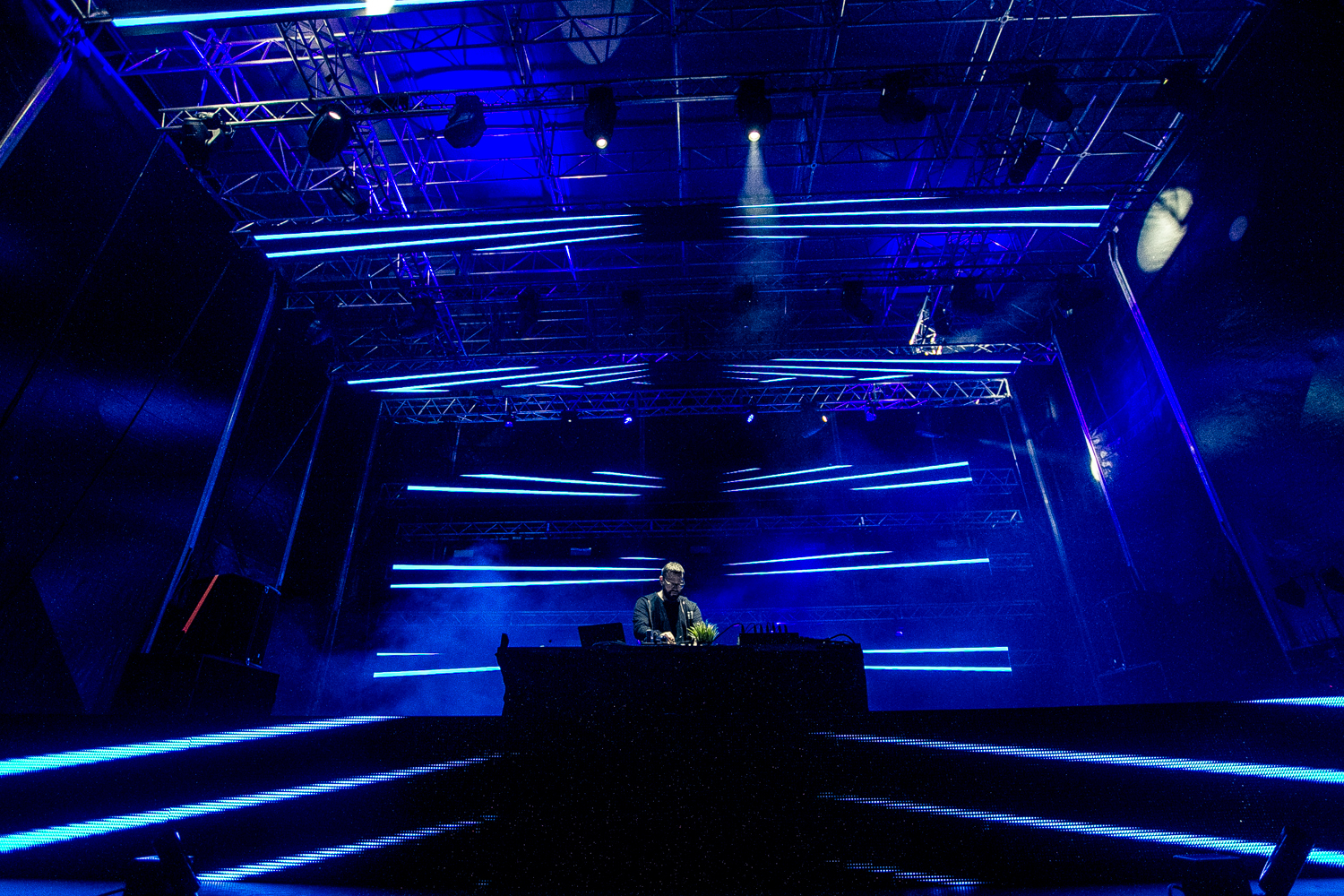The architect isn't fazed by the curious glances, but even if he was, he could do nothing, since the odd building in Boglár stops everyone in their track. The construction of the earth house has been going for 1.5 years and is expected to be finished next year. Once ready, it will function as a home, atelier and a gallery for Gábor's wooden sculptures. He plans on working on his sculptures and wooden furniture in the courtyard, and keeping his door open to visitors.
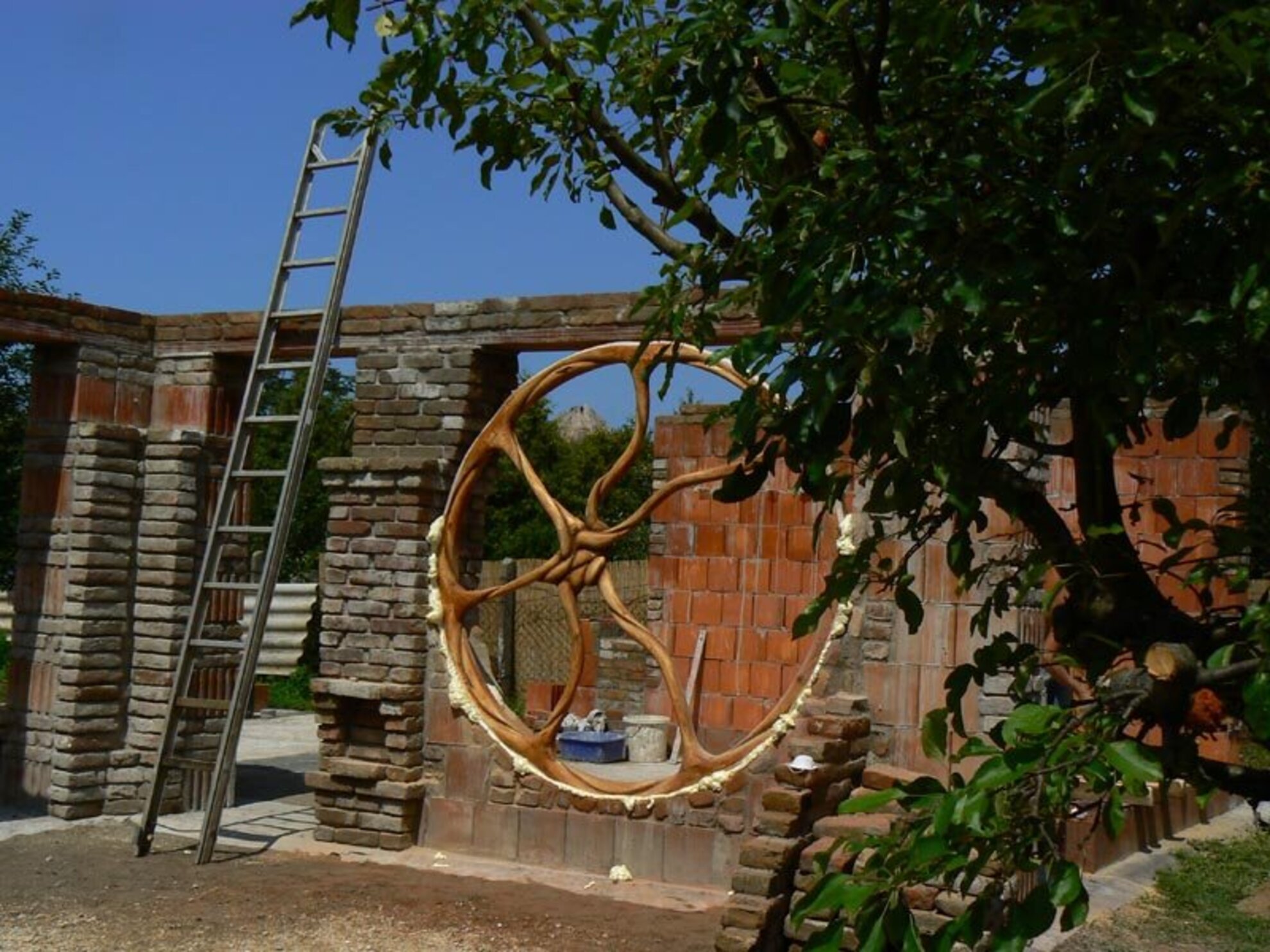
The architect was first featured in TV shows with his self-designed wooden cars: at the moment he rides his third car. It is not the foot-propelled vehicle of the Flintstones, but a solar power driven one. In clear weather, it can run as long as 3 or 4 hours in one go.
Although it takes about a day to get from Szombathely to Lake Balaton at an average speed of 40 km/h, Gábor doesn't mind: he thinks we are living too fast and too impatiently anyway. The oddball architect conducted a long correspondence with the transport authority for a permit for using his wooden car on public roads.
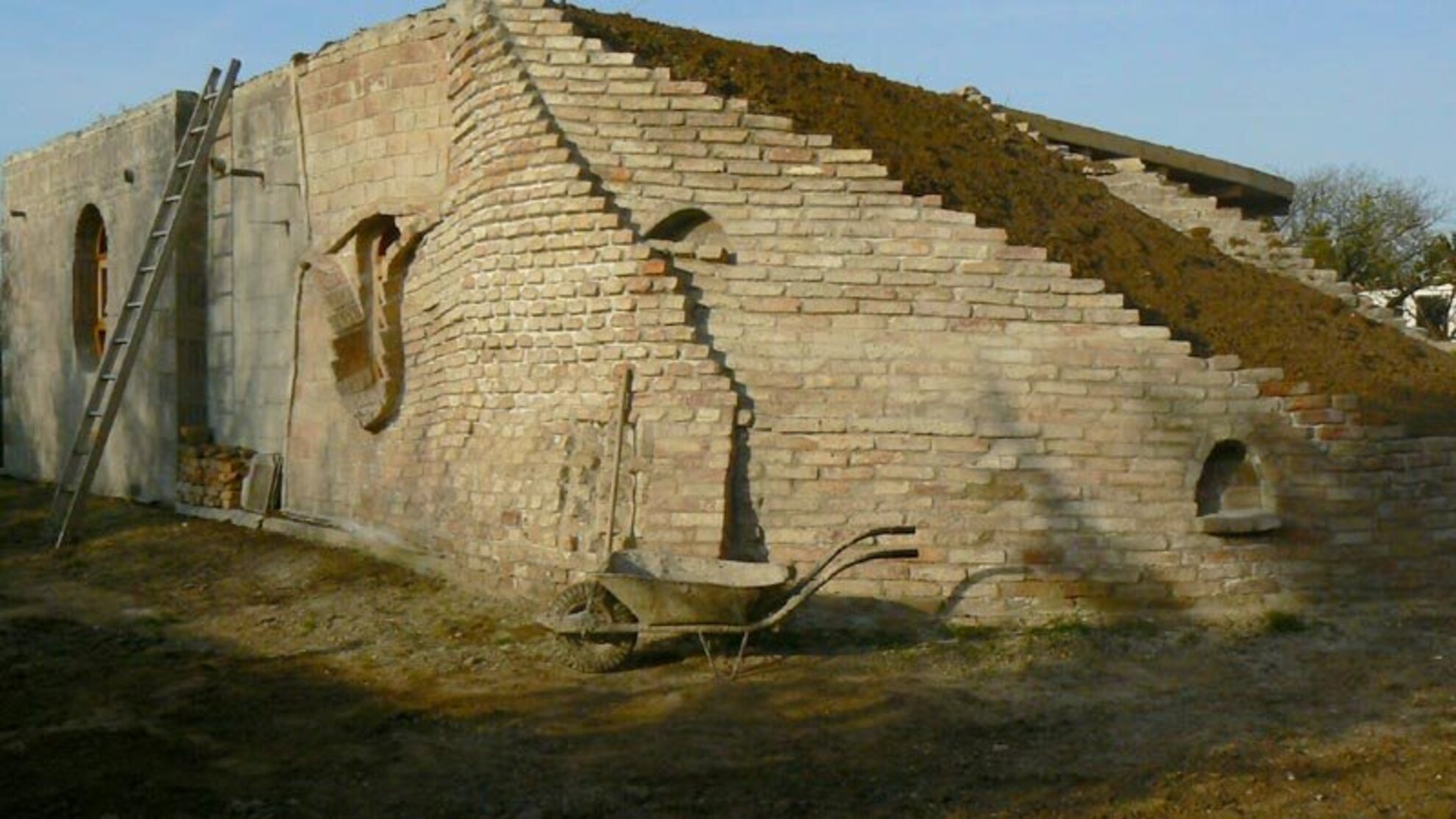
Not only his vehicle, but almost all the furniture of his house in Szombathely is made of wood. The toilet paper rack, the shower cabin and the chair made of branches were all handcrafted.
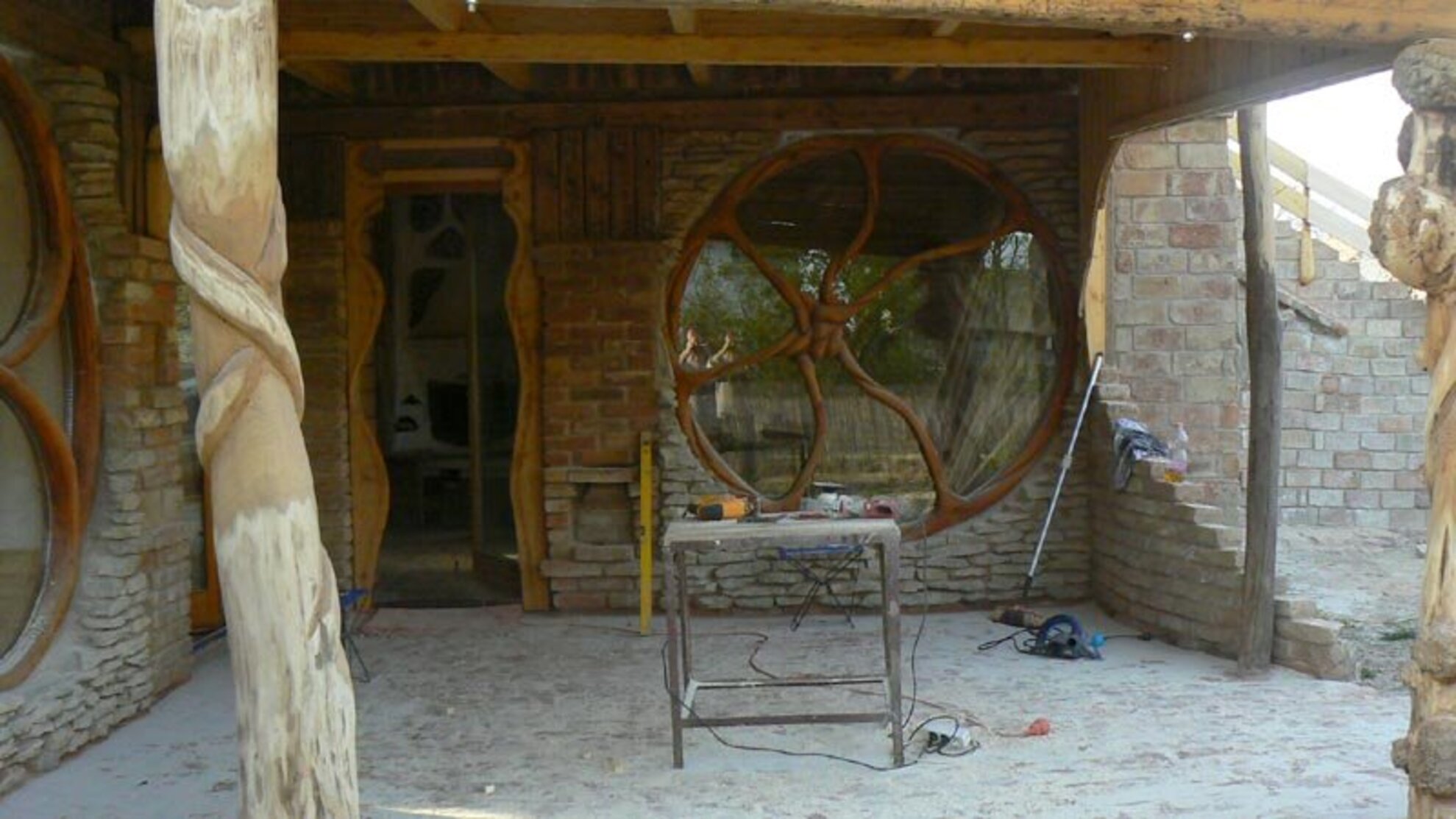
He is as obsessed with his earth house in Boglár as with his wooden objects. He categorized himself as an "energymonkey", for whom living in a home created with local materials and supplied with natural energy sources is essential.
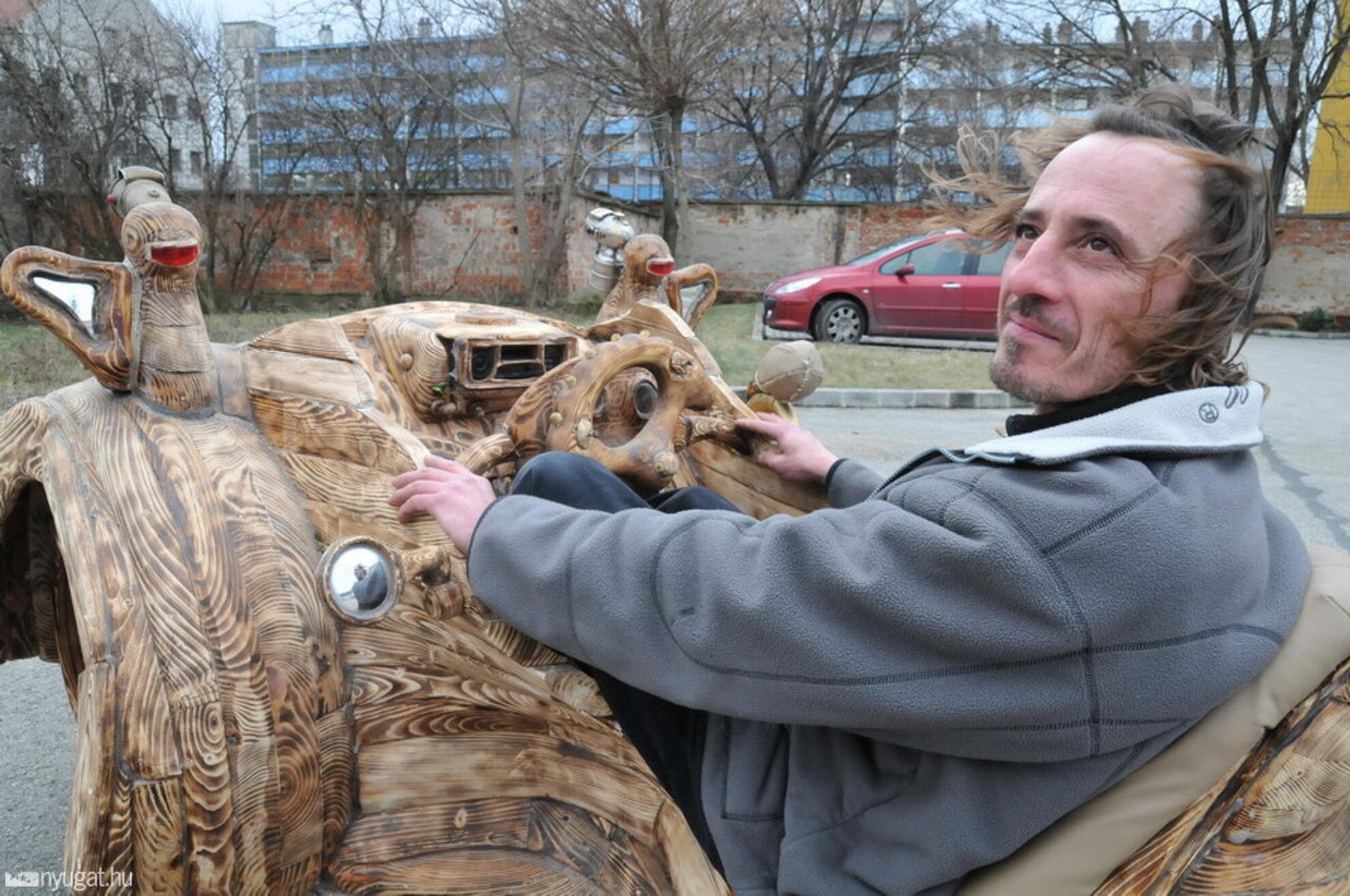
The walls are layered structures, and the entire house is covered with a 20-50 cm thick layer of soil, so its roof can double as a herb garden or flower bed. The earth house will be suitable for use all-year-round. The air for the heating arrives via a pipe through the earth layer, so it is pre-heated by the time it reaches the fireplace. Gábor also made sure that rainwater is collected - it will be used for flushing the toilet. The objects and furniture will be dominated by wood, we are certain.
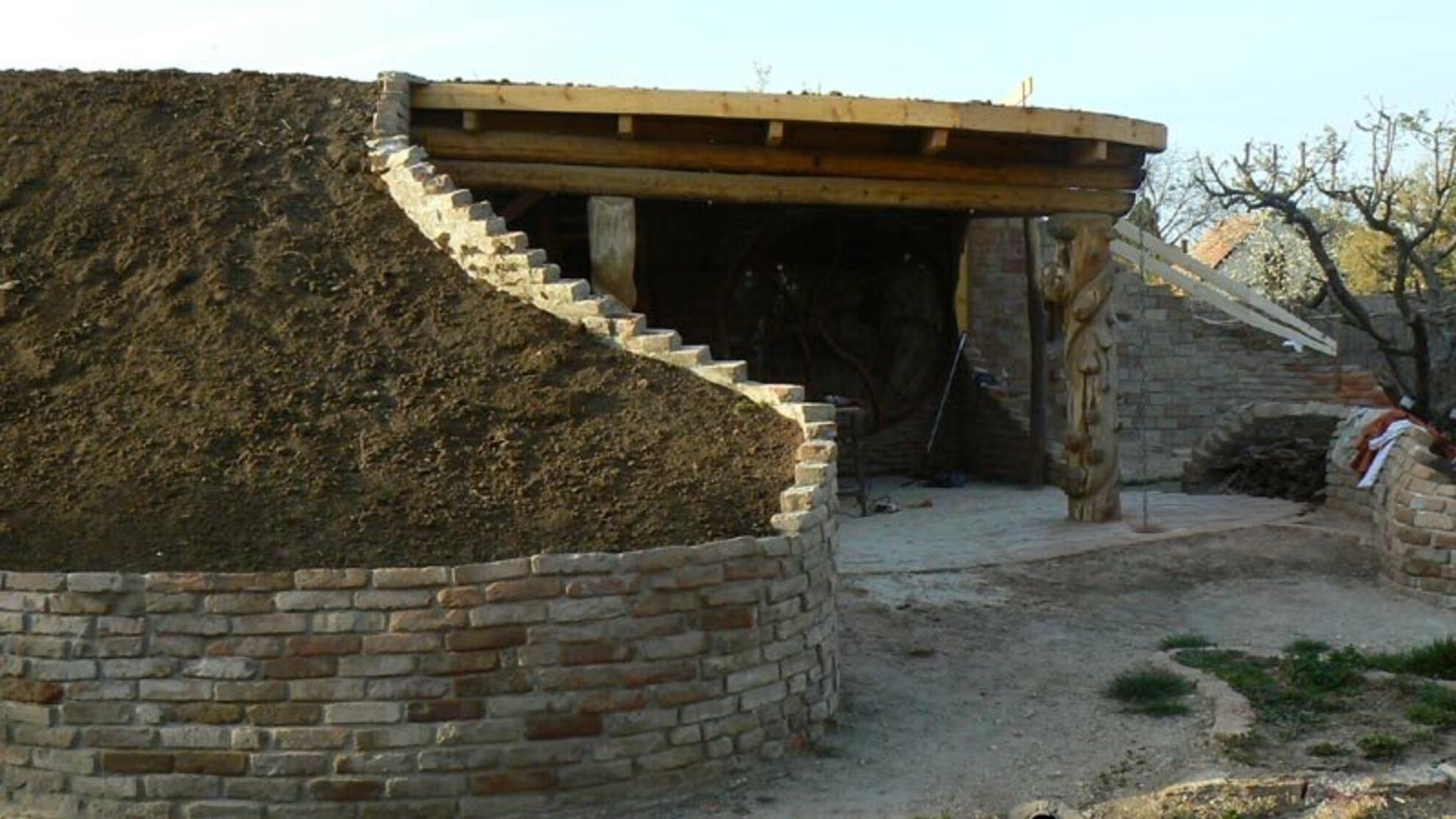
Gábr has long been infatuated with cave and earth houses: even his thesis focused on this topic at the beginning of the 1990ies. Back then, he had to travel as far as Switzerland for a consultant - Swiss architect Peter Vetsch. This form of living hasn't gained substantial popularity in Hungary since - Gábor receives only one or two commissions on earth houses a year, in spite the of the fact that "it is not a bit more expensive than building a traditional home, and since soil is great for insulation, living in such a home is more cost efficient on the long run. It offers the same comfort, you need not be a caveman to enjoy it."
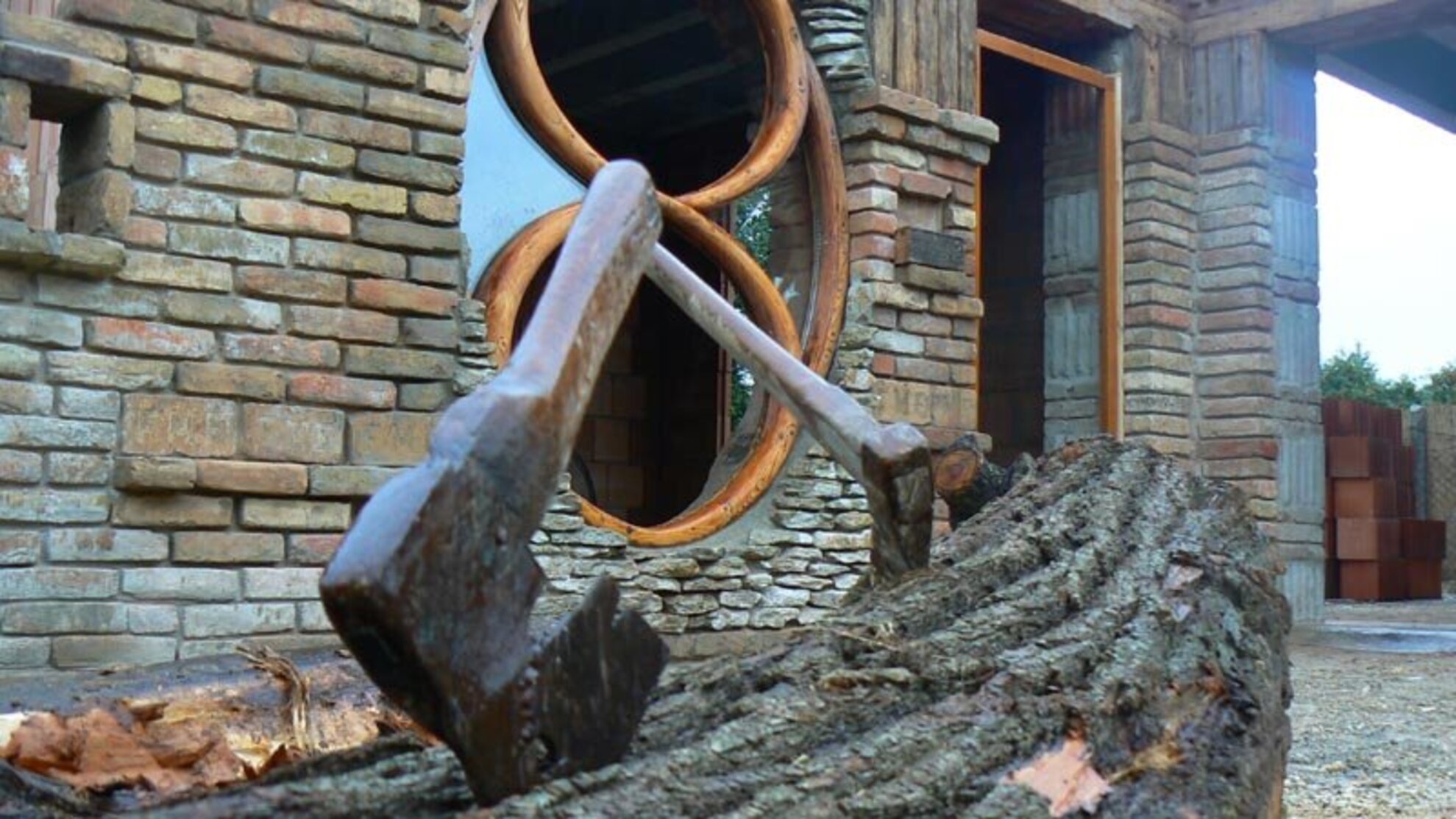
True, the architect admitted that such a house must be designed and built carefully for proper functioning. Another disadvantage is that it cannot be expanded later, since it would disrupt the static structure of the building.
